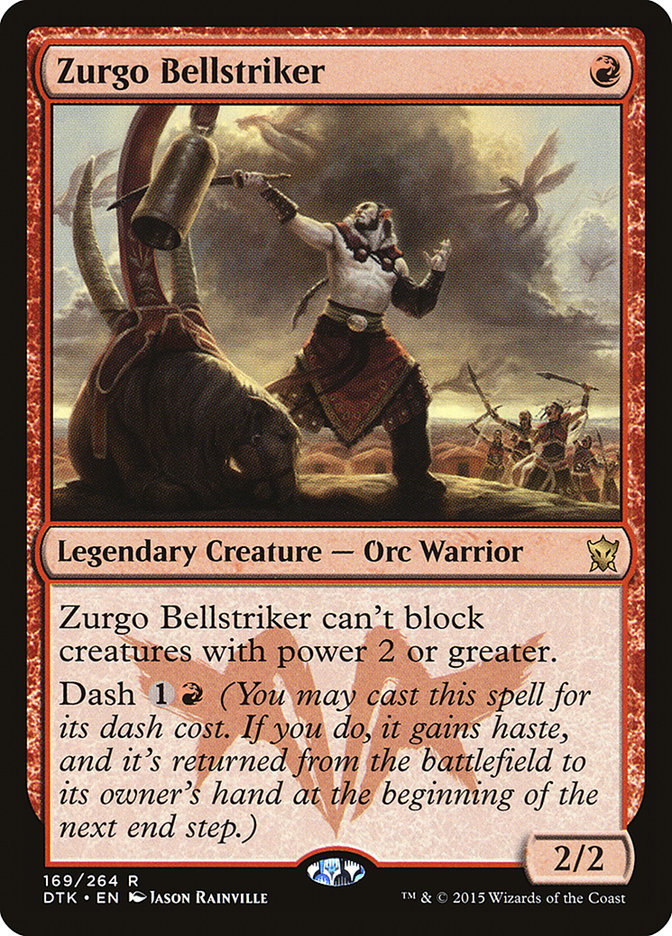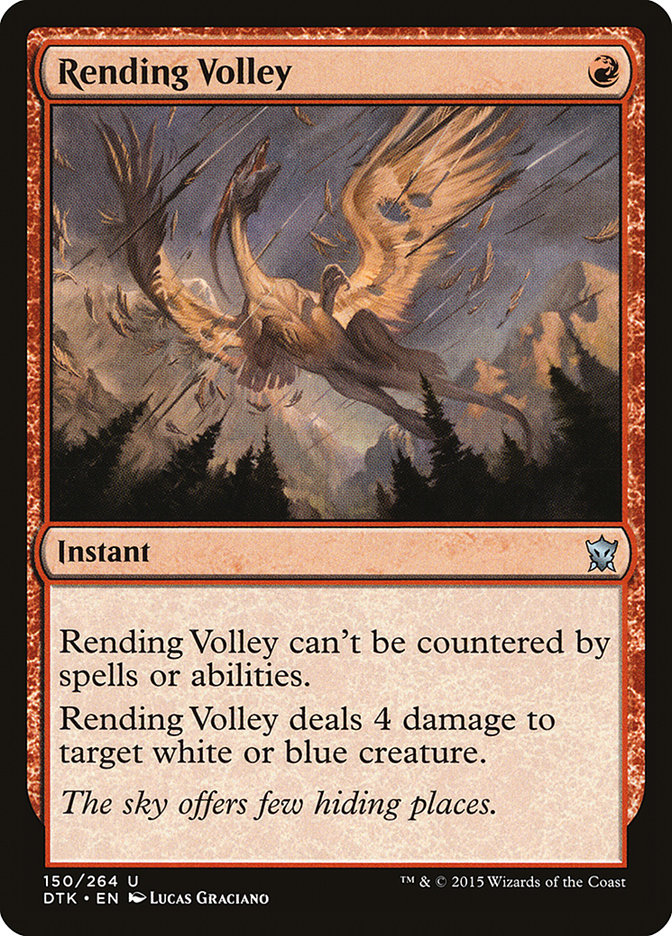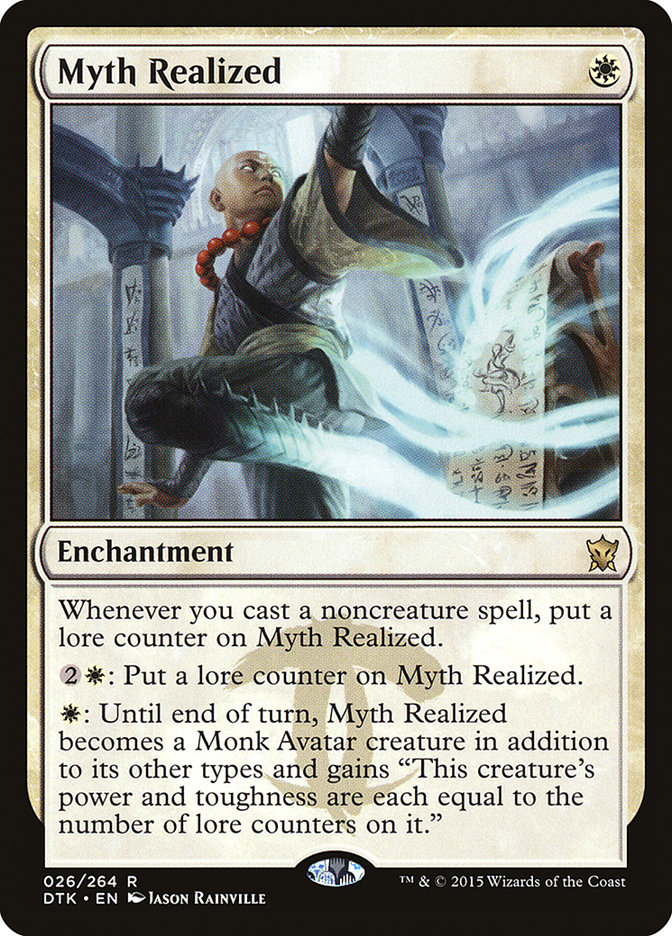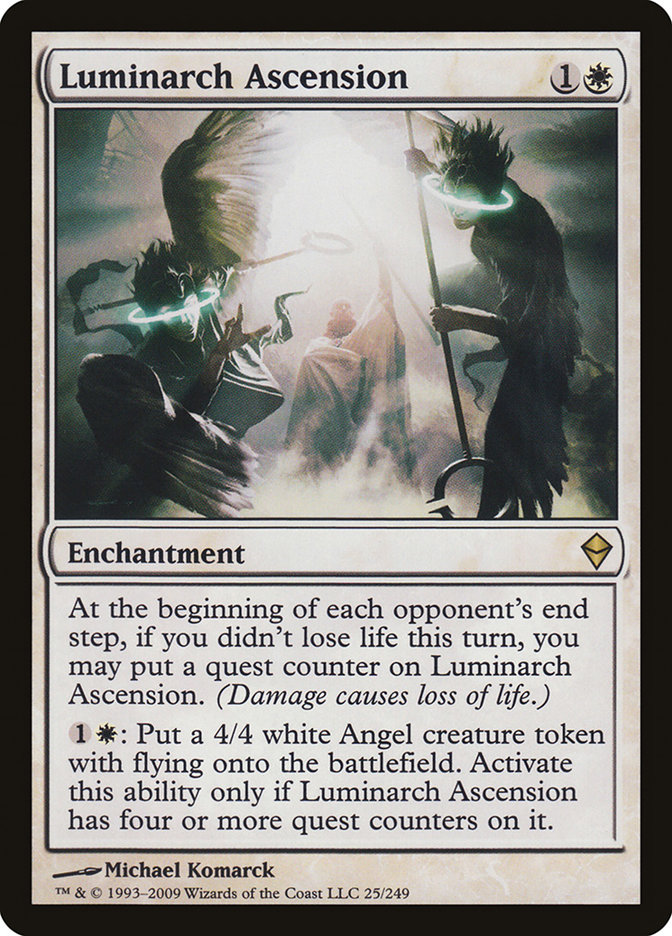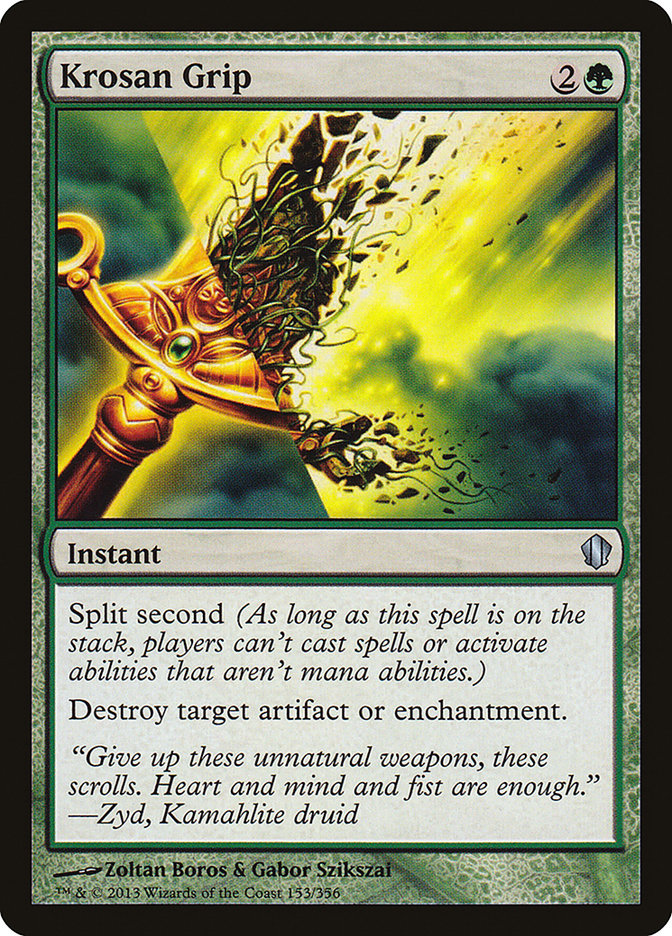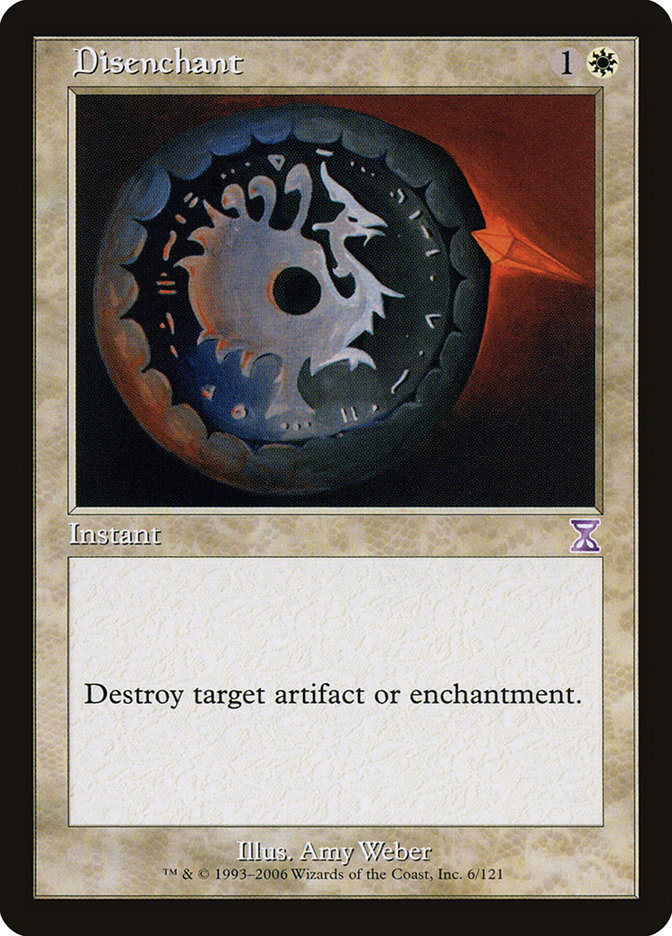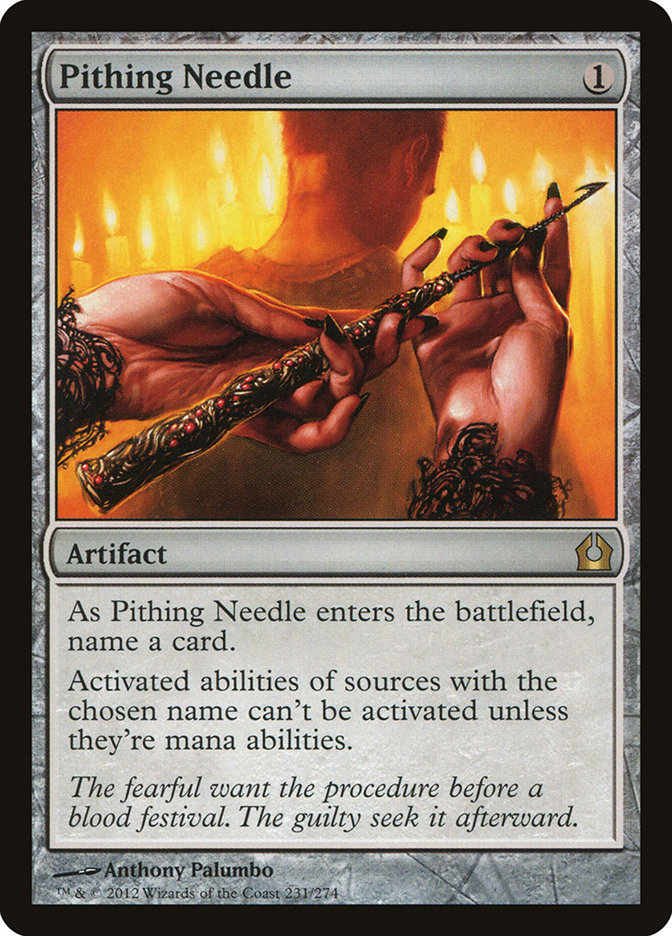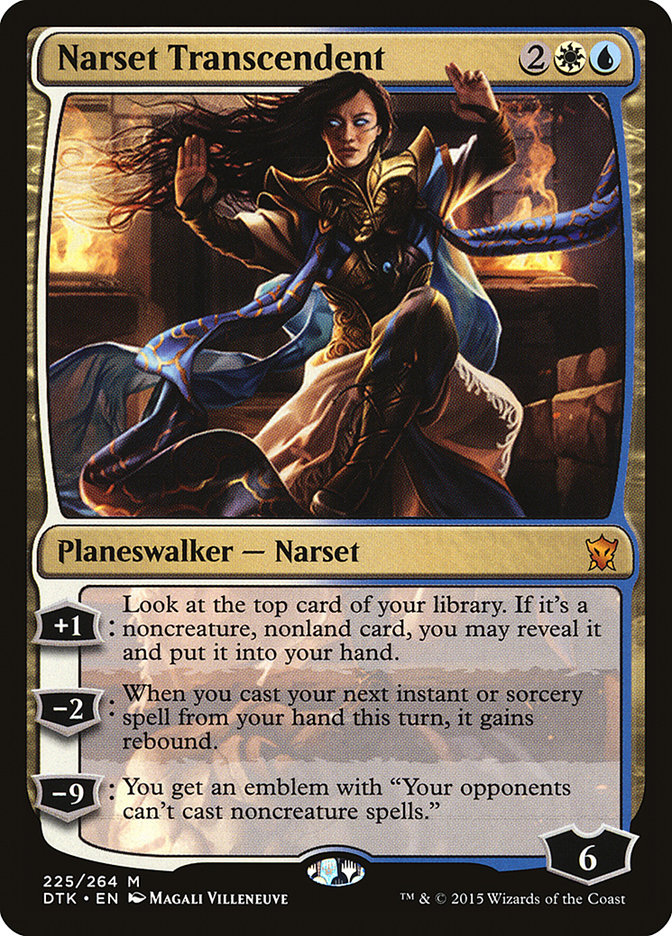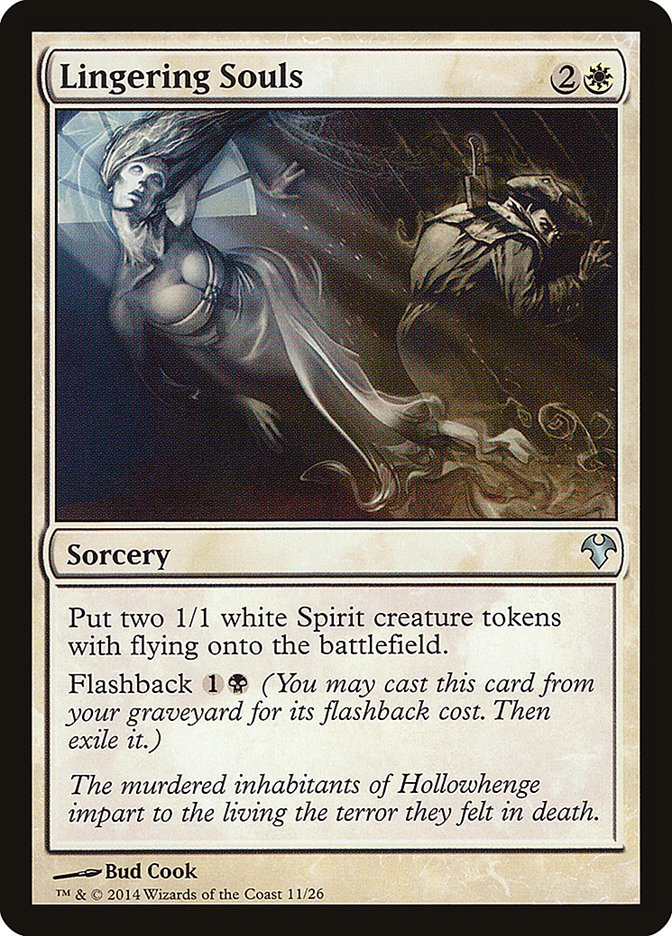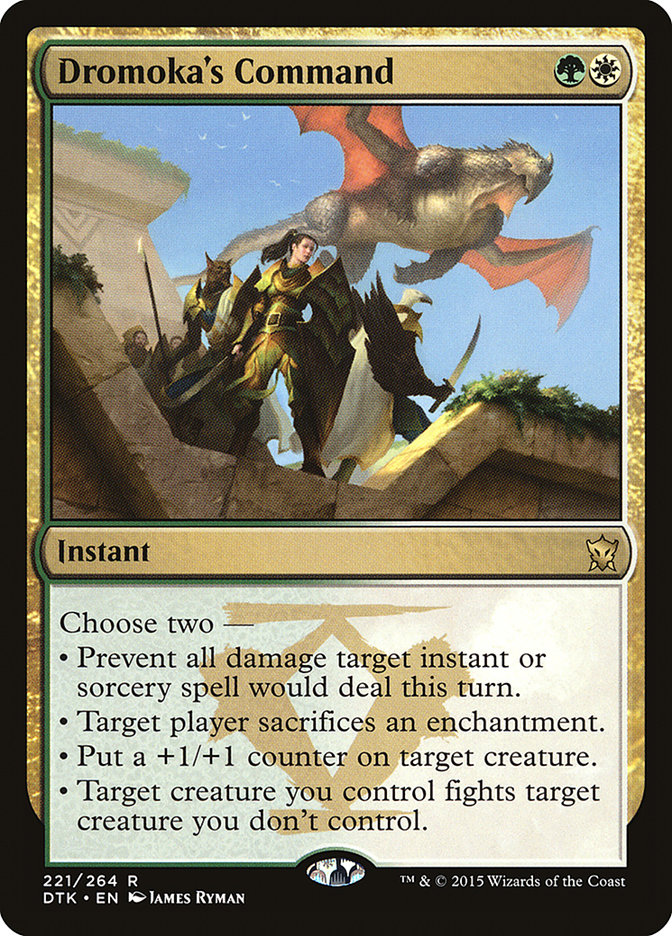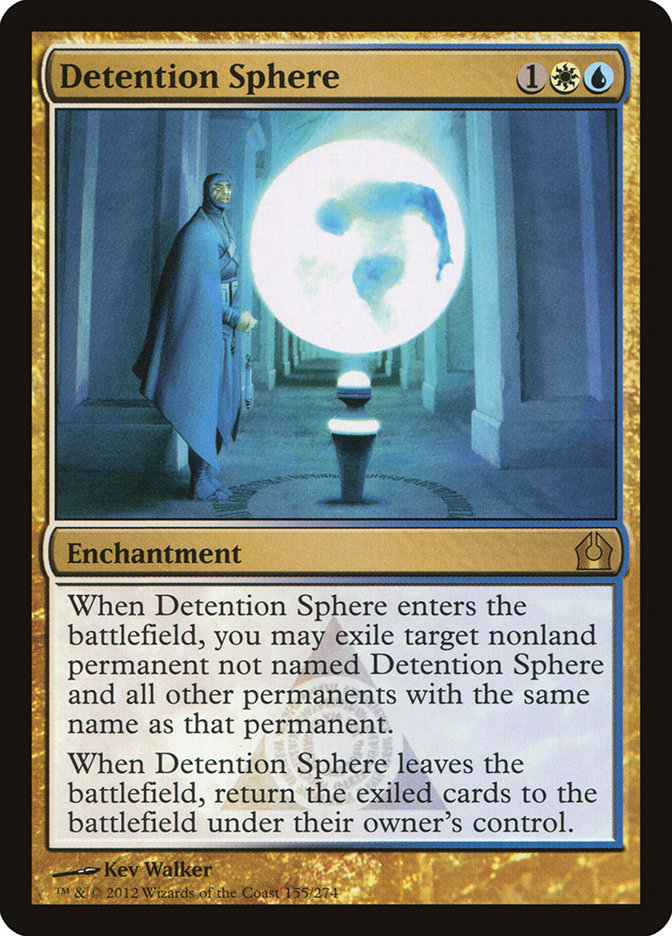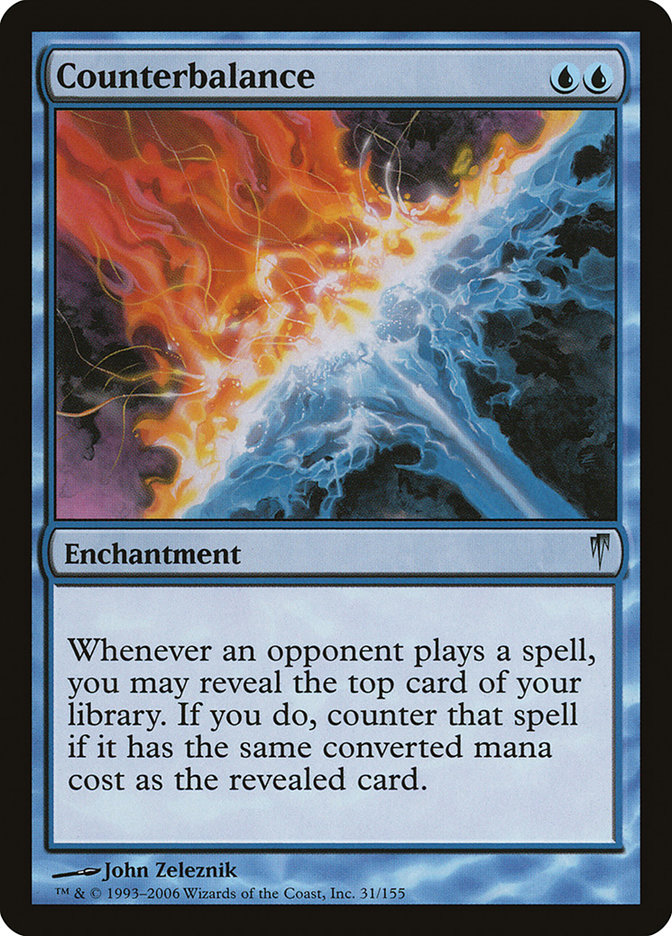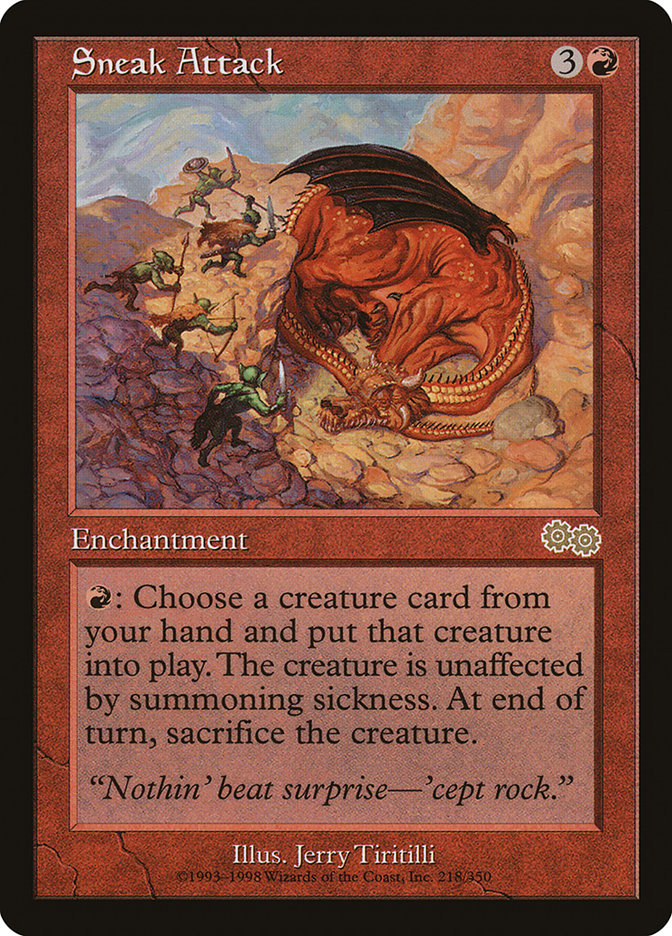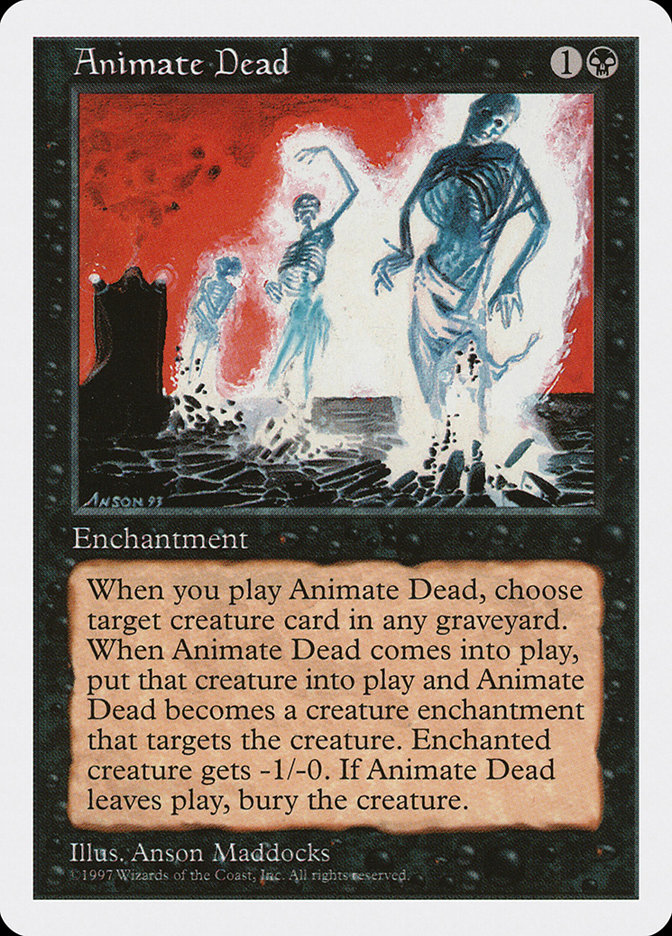If you want to know what my rank-ordered list of Legacy playables from Dragons of Tarkir is, look no further.
1. Zurgo Bellstriker, aka Red Isamaru
6. Literally everything else
Okay, so a pretty shallow set for Eternal, I’m not going to lie. There’s no one-mana blue sorcery or instant, no busted delve card, no hate bear, no weird
combo piece that interacts strangely with some card from Visions or Mirage, nothing like that. Instead, we have fundamentally fringe-playable cards that
may revitalize archetypes that are all about as good as one another.
Let’s start off with my favorite card from the set. On a very basic level, there’s a reason why red decks didn’t get Savannah Lions at the same rate as
white did. There’s a reason why Isamaru, Hound of Konda was white and not red. There’s a reason why Goblin Guide is probably the best “red deck” red
creature of all time. Being able to attack for two and not get sniped by something like Deathrite Shaman or a Young Pyromancer token is enormous. And for
all you haters, red one-mana 2/2s without attacking restrictions are pretty much 100% on seeing Legacy play (it’s just Goblin Guide so far, by the way):
This is an Isamaru with upside, as far as I’m concerned. Ironclaw Orcs didn’t have trouble seeing play at twice the price, and it’s not like your red
one-drop is really in the business of blocking anyway. Sure, there will be spots where you wish you could chump block a Tarmogoyf to try to peel Fireblast,
but there are going to be a lot of other spots where you have a 2/2 for one on turn 1 and it deals six damage.
The other side of Zurgo that’s awesome is that it can be a Goblin Guide of sorts if you need it to be – it costs twice as much and you have to
recast it every turn, but it passed the Burn litmus test of “damage-capable the turn it’s drawn,” which is hugely important in a format where every turn
could be your last.
Whereas Monastery Swiftspear asks you to play into a bunch of Spell Pierces and Dazes, Zurgo Bellstriker gives you a lot of flexibility on mana. It doesn’t
give your opponent extra cards. It attacks for two on turn 2 without trading for a Deathrite Shaman. I’m not kidding – this card will see play.
Pretty much the only actual downside to Zurgo is that you can’t cast multiples and attack for six like you can with Goblin Guide. For that reason, the Burn
maindeck that I would play going forward has a fun-of slot, like so:
Creatures (11)
Lands (8)
Spells (41)

Sulfuric Vortex is your best and the most enduring answer to a Batterskull or Umezawa’s Jitte, both of which are cards that you have to respect if you want
to win a Legacy tournament nowadays. If you want to know how I would build a Burn sideboard, it’s “look at the most popular combo decks of the last month,
figure out which two you want to attack and which one you’re okay straight up losing to, and dedicate eight slots to those and seven slots to ‘fair’
decks.” For instance, if you decide you want to beat Dredge and Storm while losing to Show and Tell, play 4 Relic of Progenitus and 4 Eidolon of the Great
Revel and zero Pyroblast or Ashen Rider. Just make sure that you have some outs to equipment – I recommend Smash to Smithereens at the very least.
On a broader level, Burn is an interesting deck choice for today’s Legacy metagame because the top finishers are almost uniformly Delver decks and broken
decks. You have favorable matchups against all of the Delver decks and are mostly behind against the unfair decks, so playing Burn nowadays is a little
like Russian Roulette: You’re a favorite to not get the bullet in any given round, but if you run bad, you’ll get your head blown off.
The next item on the list is also a one-mana card, because that’s how Legacy works. I think that Rending Volley is likely to see play because it’s a
one-mana way to kill Delver of Secrets, Stoneforge Mystic, Containment Priest, and Meddling Mage in a world where those cards are typically backed up by
Dazes or deployed at instant speed. The comparison to Flame Slash is inevitable, but being an instant is hugely important for any deck that cares about
hate bears. Is Rending Volley going to change the game? Absolutely not, but it will give Storm and Sneak and Show a better sideboard option than Pyroclasm.
There are several decks that want this in their sideboard, and that’s good enough for starters.
The next item on the list is also a one-mana card, because that’s how Legacy works.
Myth Realized is a tricky card to evaluate. The mind immediately envisions the perfect scenario – having it on the play, maybe casting a Gitaxian Probe,
countering their first creature with a Daze, and attacking for four and five and six points of damage with a creature that is only vulnerable to removal on
your terms. Obviously, this is great. If I always had this, another creature, two lands, and three spells in my opening hand, I would never stop playing
Legacy. I would literally never stop, mostly because my win rate in Legacy queues would be sufficiently high as to beat the market rate for a pack of
Homelands, or whatever they give out for Legacy queues nowadays.
The reason why I won’t die in front of the MTGO client is because Myth Realized won’t be in most opening sevens. Unfortunately, Myth Realized is way worse
when you have a lot of spells in your graveyard – topdecking a 0/0 for W isn’t anyone’s idea of a good time. If you’re behind, it probably won’t be enough
to save you. If you’re ahead, you’ll lose tempo but add a threat. If things are at a stalemate and you have a ton of lands out in your low-curve tempo deck
built to exploit casting a lot of cantrips, it’s probably decent.
The real question is not “is Myth Realized good?”, because it obviously is. The real question is “will Myth Realized supplant a card in the U/W/x
tempo/midrange shell?” There are plenty of good cards that see basically no Legacy play, because that’s how the format is. Unfortunately, the first thing
that Myth Realized reminds me of is this:
Cheap white enchantment? Check.
Amazing if you have it early and you have ways to interact? Check.
Worthless if drawn while you’re behind? Check.
So that’s my starting point for comparisons. Activating the 2W ability is basically never happening unless the game has fully stalled out since Legacy
decks tend to be pretty mana-efficient, so we’re looking at a 0/0 Quirion Dryad for W that you have to pay W to use every time. The inherent balance of the
card, of course, is that you’re putting yourself behind on tempo every time you actually use it, which isn’t something I’ve seen mentioned a lot. One mana
isn’t a lot until you realize that the decks that want this card don’t want more than twenty lands, at which point one mana could reasonably be half your
turn.
Finally, and to the biggest reason I don’t love Myth Realized, I think Myth Realized is made worse by the presence of Stoneforge Mystic. It isn’t just that
Mystic is a superior mana sink (it is). It isn’t just that Mystic encourages you to play enough creatures that die to removal that occasionally, your
weapon-Squire lives. It’s that the cards that people board in to fight your Stoneforge Mystics also fight your Myth Realized:
If your Sultai opponent has Golgari Charm, it now fights both your Young Pyromancer and your Myth Realized. Unless you cut Stoneforge Mystic, you’re making
your opponent’s non-creature removal way better against your tempo deck. If you play traditional Jeskai Delver, on the other hand, your opponent has to run
the risk of holding Wear//Tear against True-Name Nemesis or Delver of Secrets (or Young Pyromancer or Monastery Mentor, if you’re feeling inventive). When
you add Myth Realized to your list, you are incurring costs that aren’t obvious, even after your opponent’s sideboard cards are marginally better against
you.
Do I think Myth Realized is bad? Absolutely not – it resides on the very cusp of Legacy playability, and I think that’s enough for people to work on
finding it a home. The core of its desired home is fairly straightforward: Brainstorm, Ponder, Gitaxian Probe, Daze, Force of Will, Swords to Plowshares,
Myth Realized, twenty lands, and twelve other cards. What they should be is a really important question, and I think people will take a while to settle on
the right answer.
If you want a starting direction, I would try it out with every possible permutation of Delver of Secrets, Stoneforge Mystic, Young Pyromancer, Monastery
Mentor, and True-Name Nemesis. I would stay away from otherwise-creatureless decks, as the risk of it ending up as a target for otherwise-dead removal is
too rough to make up for the upside of Sensei’s Divining Top et al.
Those three cards – the one-mana cards, surprise! – are what I would expect to see in Legacy decks in the next month. The next two cards are unique effects
with solid prospective homes but critical question marks. First up, we have Narset Transcendent:
The obvious downside to Narset is that she doesn’t protect herself. Like, at all. To compensate for this, R&D put her starting loyalty at six, clearly
anticipating the need for her to survive a direct hit from a real creature. So where is her upside?
I see her as a sort of Tezzeret, Agent of Bolas that enables a different sort of Big Blue deck. Obviously you want four Jace, the Mind Sculptor before you
want any Narsets, but “wanting Jace a lot” hasn’t stopped four-mana blue planeswalkers from seeing play in Legacy. Granted, Tezzeret makes three 5/5s or
casts Tendrils of Agony for your artifact count, but I still think that Narset has room for exploration.
The +1 ability is fine but not amazing – there are plenty of repeatable ways to draw a card in Legacy that don’t cost four mana and miss 40% of the time.
The ultimate is similarly underwhelming – you’re rarely losing to people casting spells with your U/W deck. It’s obviously good, but the real action is on
the -2 ability. So what can we do with that?
The first spell I would want to rebound is Thoughtseize. The upside of having an Archivist goes way up when your cards trade for theirs efficiently.
Besides, one of the biggest problems with a creatureless or creature-light strategy in Legacy is a persistent weakness to combo. After all, if you have all
day to set up, you can set up a bunch of interaction into multiple must-counter cards. Playing a pile of discard makes that a lot harder. Also, you know,
Narset’s ultimate is at its best against spell-based combo decks. So she is a sort of win condition against combo, you just have to work to get there.
Obviously Narset + counterspells are a nonbo, and Narset + discard spells are a combo, so let’s stick with that. What if we can play creatures without
actually playing creatures?
I heard that Lingering Souls is pretty good at defending planeswalkers. Rebounding it is obviously the dream, but just curving Lingering Souls into Jace or
Narset is great. What does the rest of this deck look like?
Creatures (4)
Planeswalkers (7)
Lands (22)
Spells (27)

I will say that this deck both looks like a lot of fun and leans heavily on your skill with Cabal Therapy. If you don’t know what to name with Cabal
Therapy against various decks, this is going to be a lot worse. If you consistently hit their relevant card with it though, it seems incredible. On a less
demanding level, Jace into Therapy is a cute one-two punch that can act as additional removal. The deck’s path to victory is pretty obvious: stall out the
game, grind them out with planeswalkers, and exile their library. Not the simplest task, but you do have Deathrite Shaman to speed up your early turns a
bit. I don’t know if including Deathrite is worth the cost of making this deck vulnerable to Swords to Plowshares. If you want to give this a spin, I would
also try out Talisman of Dominance in that spot.
The primary concern with Narset is tempo loss. Sure, she does a ton, but everything comes at the cost of time. You spend four mana to not impact the board.
You give something rebound, but you have to wait until next turn to actually realize the value. You draw the top card of your library, but you’re tapped
out. In a format featuring Daze and Spell Pierce, I think that tempo decks will end up being her primary obstacle. Is that obstacle necessarily fatal? Of
course not. Some Europeans will probably show up with Narset and Punishing Fire before too long. But Narset’s first and biggest test will be Delver of
Secrets.
The last card on my Legacy shortlist doesn’t cost one mana. It isn’t blue. It’s not a hyper-efficient creature, even. No, this is just a card that I think
will fulfill a lot of different needs:
The prevailing problem with Charms and Commands in Legacy is that one of the modes is usually really bad, and that’s enough to render it unplayable.
Azorius Charm, for instance, has two playable modes. It also gives your creatures lifelink. If it did anything else that was useful, I would have tried to
play it in Legacy. As a Repel with Cycling, it wasn’t going to happen.
Dromoka’s Command looks like the real deal to me. Let’s go mode-by-mode:
– “Prevent all damage that target instant or sorcery spell would deal this turn.”
This requires that there be highly-playable damage-dealing instants and sorceries. Not only does it require that, but it requires that the deck playing
this card actually care about those cards. As it so happens, Lightning Bolt is a hugely relevant card for any G/W/x deck in Legacy. The first mode of this
card basically reads “Counter Lightning Bolt or any lethal spell from a Burn deck.” If you’re living the dream, you can also catch a Pyroclasm out of Sneak
and Show or a Rough//Tumble out of Temur Delver. Not a bad start.
– “Target player sacrifices an enchantment.”
Yeah, I think this mode has applications.
– “Put a +1/+1 counter on target creature.”
Not the most glamorous mode out there, but you can steal some number of points/amount of tempo just by jamming your Noble Hierarch or Mother of Runes into
their Deathrite Shaman on turn 2. Further down the road, this can also protect your Ethersworn Canonist from Massacre. It can let your X/X eat their
Tarmogoyf in a spot where your creature would have otherwise just been dead. I don’t need to tell you how tight the margins are on combat phases – a pump
spell that slices and dices is a real value-add to G/W/x decks.
– “Target creature you control fights target creature you don’t control.”
This is where the money is. You have your Knight of the Reliquary or whatever in play and they have a Tarmogoyf? You just get to eat it without worrying
about getting raced. You have a Tarmogoyf in play? You get to eat their Delver of Secrets. The list goes on and on – you want this effect in a
correctly-built G/W/x deck in any format. Even if you’re playing a smaller deck, you’ll have something like Mother of Runes to make sure that you win the
fight. Just make sure that you’re not trying to fight a green creature or a white creature – Mother of Runes won’t be able to help you out there.
In all honesty, I think that this list may underrate Dromoka’s Command. It would obviously be great if one of the modes was Abeyance, but our G/W/x decks
will just have to keep preying on tempo and losing to combo. Now though, it looks like they have a cool new toy to do it with.


